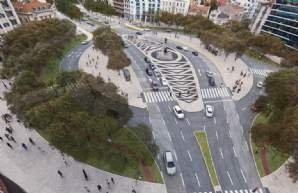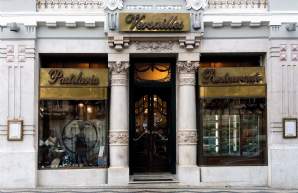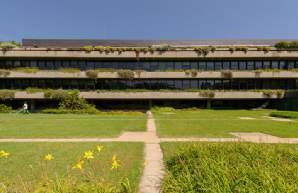.jpg)
Campo Pequeno
The Campo Pequeno bullring is an arena for bullfights, musical concerts, fairs, exhibitions and other events
.jpg)
Despite being designed and built in the late 19th century, this area is still known as Avenidas Novas (New Avenues) and remain a coveted place to live in Lisbon. Wide streets and landscaped fronts, denoting the Art Nouveau and Art Deco features Ressano Garcia used to restructure this area, and the influence of Georges-Eugène Haussmann's renovation of Paris.
The streets intersect perpendicularly, creating square blocks, where residents can enjoy a neighbourhood-centred lifestyle, frequenting local shops, patisseries and restaurants (some with a distinguished history and interesting stories to tell). The area begins at Marquês de Pombal roundabout, up through Avenida Fontes Pereira de Melo and Praça Duque de Saldanha, Avenida da República and adjacent streets, culminating in the Campo Grande Garden (today, Jardim Mário Soares). A central zone, well served for public transport and cycle paths, in a city that aims to be increasingly sustainable.
In the most central part of Avenidas Novas, renovated buildings are the most common, often with private parking areas, terraces and balconies. Some properties also have swimming pools, gymnasiums, communal areas (exterior and interior) and security systems.
.jpg)
The Campo Pequeno bullring is an arena for bullfights, musical concerts, fairs, exhibitions and other events

Located in the central axis of Lisbon, Duque de Saldanha square is one of the main squares in Lisbon.

Pastelaria Versailles is one of Lisbon's historic patisseries, which opened over 100 years ago.

The Calouste Gulbenkian Foundation comprises gardens, concert and performance halls, an art library, a museum, an orchestra and a choir.
.jpg)
Whether you are looking for a villa, a flat or an investment opportunity, Savills has a specialist in the residential market available to help.